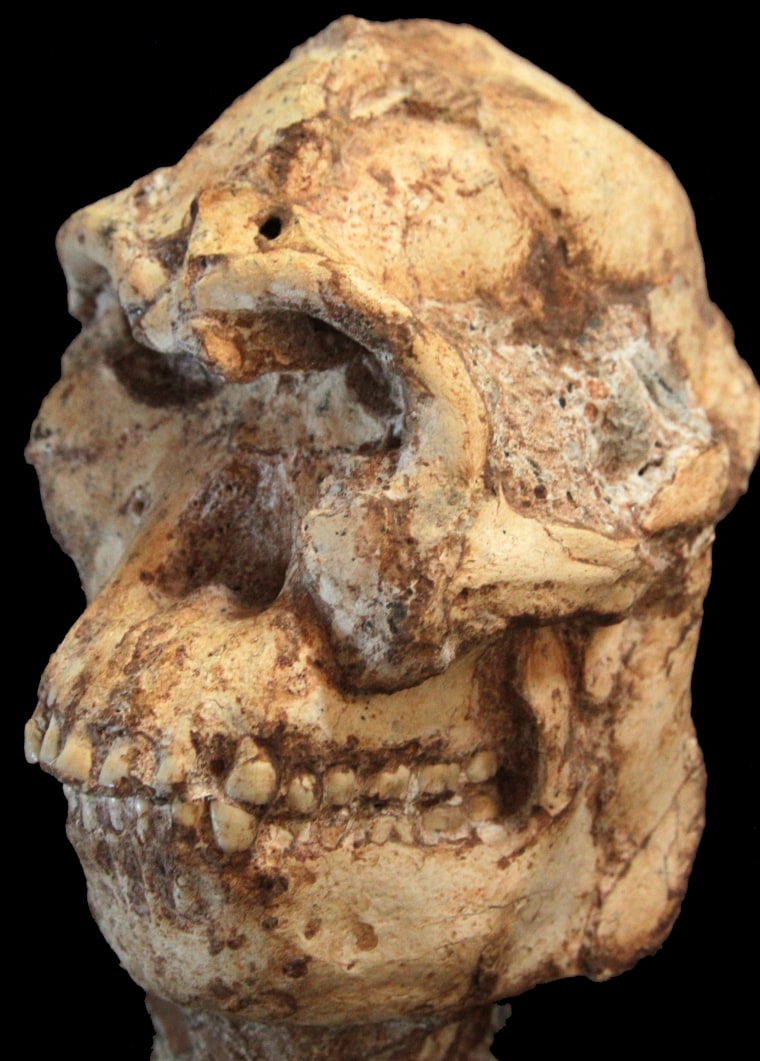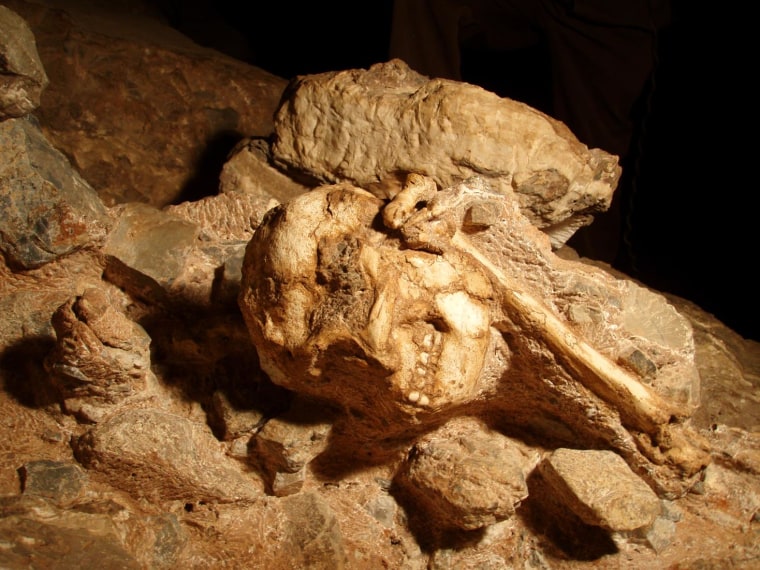Scientists say a new dating technique suggests that a human ancestor whose fossils were found in a South African cave lived about 3.7 million years ago. That's roughly the same time frame during which the famous human ancestor called Lucy roamed an area in modern-day Ethiopia, thousands of miles to the north.
The findings focus on a skeleton known as Little Foot, which represents a species in the same group as Lucy, known as Australopithecus. Little Foot's age has been the subject of debate for more than a decade. The latest findings, published in this week's issue of Nature, are likely to raise new questions about the diversity of humanity's ancestors.
"Whether critics of the previous dating of Little Foot will be satisfied with this new work remains to be seen, but the skeleton once again highlights the diversity of pre-human forms in both East and South Africa," Chris Stringer, a paleoanthropologist at London's Natural History Museum who was not involved in the study, told NBC News in an email.
Lead researcher Darryl Granger, a geologist at Purdue University, said the new findings could resolve the longstanding questions about Little Foot, a nearly complete skeleton that was found in South Africa's Sterkfontein Cave two decades ago and is classified as Australopithecus prometheus.

Little Foot vs. Lucy
Paleoanthropologists saw skeletal similarities between Little Foot and Lucy, the better-known human ancestor whose bones have been dated to 3.2 million years ago. Like Little Foot, Lucy has been classified as an australopith — Australopithecus afarensis. But were the two creatures contemporaries, or widely separated in time and space? Could Little Foot have been a true human ancestor, or a mere outlier? That's been the crux of the debate.
In 2006, a different team of researchers determined that the fossil was only around 2.2 million years old, based on the radioactive decay of uranium isotopes in the minerals deposited within the skeleton. That was far later than Granger's initial age estimate of 4 million years.
"There's nothing wrong with their dates, the data look good, so at that point I conceded that [my] burial age was wrong," Granger said. "But it never made sense. ... This problem with the ages has been something that's been bugging me for years."
If the 2.2 million-year figure was correct, then Little Foot would have lived after the rise of more humanlike ancestors in the genus Homo, representing a throwback species and an evolutionary dead end.
Rechecking the dates
So when Purdue upgraded its PRIME Lab and added a gas-filled magnet detector to its accelerator mass spectrometer, one of the first things Granger and his colleagues did was to recheck the radioisotope dates for Little Foot. They analyzed a variety of mineral samples from the rock surrounding the fossil, looking at the balance of aluminum and beryllium isotopes. When the readings were laid out on a chart, the results showed that an age of 3.67 million years was the best fit.
"It's only with this upgrade to the accelerator that we were able to get these results," Granger said.
In the Nature paper, the researchers suggest that the earlier work came up with the 2.2 million-year-old age estimate because flowstone was deposited within cracks of the fossil skeleton more than a million years after Little Foot died. As a result, the radioisotope reading would pick up the age of the younger flowstone rather than the older skeleton.
If the findings are accepted, and that's still a big "if," Little Foot would fit better into the arrangement of humanity's family tree. But the shift would also restructure that tree to look "bushier," with similar species co-existing in widely separated regions.
Last month, researchers reported that the early representatives of own genus, Homo, appeared to be more diverse than expected. "We're pushing back and showing that there was diversity at the beginning of Australopithecus as well," Granger told NBC News.
In addition to Granger, the authors of "New Cosmogenic Burial Ages for Sterkfontein Member 2 Australopithecus and Member 5 Oldowan" include Ryan Gibbon, Kathleen Kuman, Ronald Clarke, Laurent Bruxelles and Marc Caffee. The research was funded by the National Science Foundation, the Palaeontological Scientific Trust and the National Research Foundation of South Africa.

